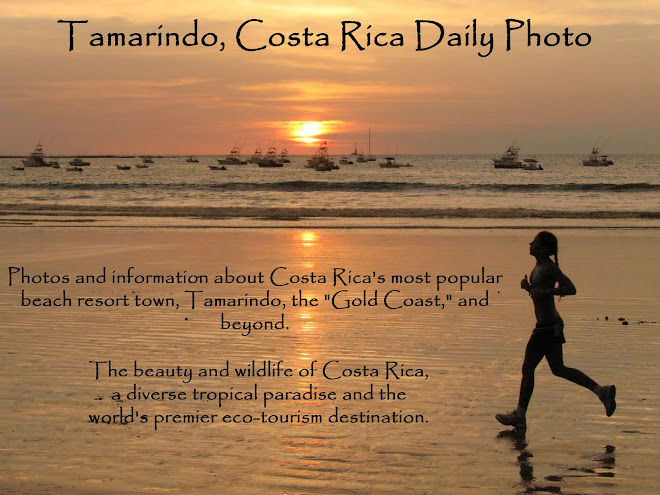 This is a close-up photo of a section of the pinuela leaf. The leaves near the center of the plant turn red when the plant is getting ready to bloom, with lilac flowers.
This is a close-up photo of a section of the pinuela leaf. The leaves near the center of the plant turn red when the plant is getting ready to bloom, with lilac flowers.In view of how thick the plants are, and how sharp are the tips of the leaves and the thorns on the leaves as shown in this photo, you can be sure that it makes sense to walk around and not through a patch of pinuela plants.
Two days ago Glenda left a comment wondering what would happen if you brushed against the plant, and yesterday Saretta left a comment saying that she liked the red color visible in the center of yesterday's photo. I hope that his photo is responsive to their comments. Glenda, this is a plant you do not want to brush against. Saretta, I agree. The vibrant red color and the thick, straight, ribbed texture of the leaves are certainly unusual.
By the way, if you want to see vibrant plant colors and shapes in a unique glass art installation, click here to see photos the Chihuly glass installation in the Desert Botanical Garden in Phoenix, Arizona featured on the Scottsdale Daily Photo site.
I also recommend that you click here and scroll back to the January 27 post on Saretta's Molfetta, Italy Daily Photo site to read a fascinating explanation that the word and color sepia comes from cuttlefish. I think sepia is enjoying a revival because of the ease of shooting in sepia mode with digital cameras or photoshopping photos to sepia. I doubt that you will see sepia on this site, however, because I think it works best for architectural shots of old buildings, which you will rarely see on my site.










+IMG_3291.JPG)



+IMG_3797.jpg)
+IMG_3799.jpg)



+P1100191.jpg)
.jpg)



+20011+P1000021.jpg)


+P1000130.jpg)

++0568+P1000941.jpg)


+0111D+P1000303.jpg)






